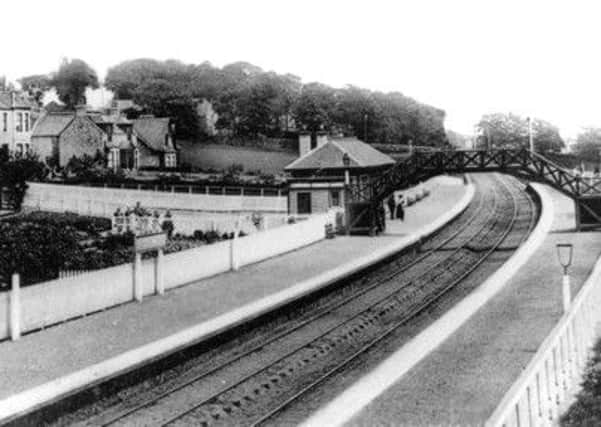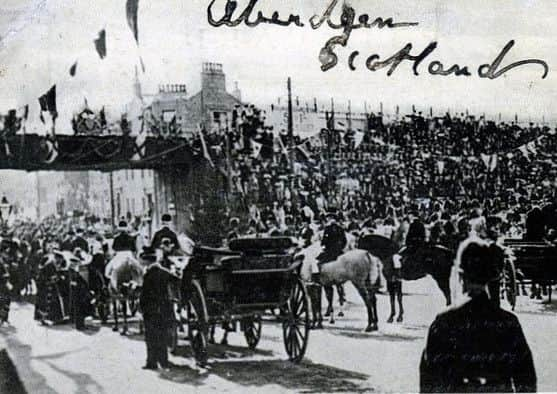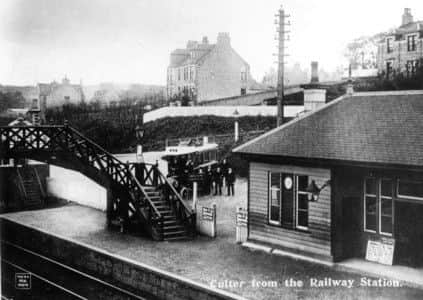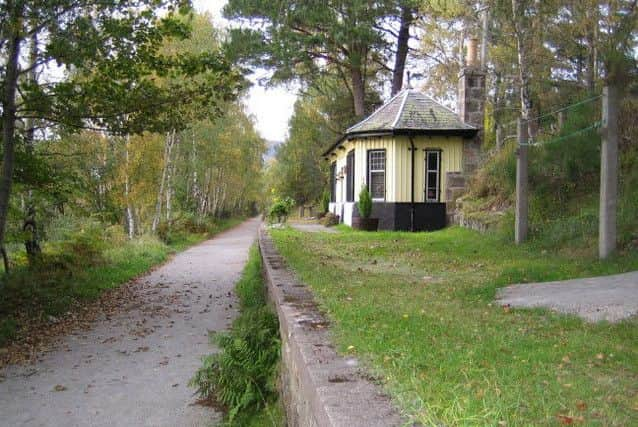In pictures: Aberdeen’s Royal Deeside Railway Line


The story of the Deeside Railway line begins in 1845, when the idea of a railway line to link the towns and villages of the area to Aberdeen was first mooted.
After securing the assent of Parliament and funding from interested backers, the line began construction in 1852 and officially opened on 7 September 1853.
Advertisement
Hide AdAt first, the line was a single-track affair which ran three trains a day from Ferryhill in the centre of Aberdeen to the riverside town of Banchory approximately 20 miles to the west of the city. Improvements to the service during this time included the extension of the terminus to Guild Street in 1854 and the doubling of lines between Ferryhill, Culter and Park stations to carry large commuter trains.


The original proposal to terminate the line in Braemar never came to fruition, as the Queen felt it would be too intrusive on her family’s privacy on the royal estate. Instead, the line terminated some 43 and a quarter miles later away from Aberdeen in the burgh of Ballater; a popular hillwalking town.
Throughout its life, the Queen used the line to get to and from her royal estate in Braemar. Royal trains never entered Aberdeen station, instead reversing at the Ferryhill station where a turntable and sidings still exist to this day. Stations were closed and level crossings locked off at least fifteen minutes before the passage of the Royal carriages.
Journey times for the Royal service took around 75 minutes as the Queen apparently had a disliking for fast travel on the route. From 1865 until 1938 a Messenger Train ran when the Royal Family was in residence, leaving Aberdeen in the wee hours to make the journey west. Royal passengers on the route included George VI and the Queen Mother, as well as Queen Elizabeth II and children Charles and Anne.
Original service operators the Great North of Scotland Railway (GNSR) were subsumed into the London and North Eastern Railway (LNER) during the 1920s. Things continued this way until after the Second World War, when British Railways took on the Deeside Line in 1948.


Services on the line doubled in April 1958, with a Sunday rail service reinstated to meet demand. Nevertheless, despite the prestige of carrying two reigning queens and various foreign dignataries such as the Shah of Persia in 1899 and the Czar of Russia in 1896, the Deeside Line saw stations at Pitfodels, Murtle and Culter amongst others close throughout the 1900s due to competition from buses and waning passenger numbers.
Advertisement
Hide AdWith the changes in line ownership came a shift away from steam-powered locomotives to diesel and even electric motors. The railway achieved industry fame in the 1950s when it was selected to trial a British Rail Battery Electric Multiple Unit battery-powered train converted from a Derby Lightweight Diesel chassis. The lead-acid battery powered machine was used to explore the possibility of electric train travel until 1962, when a series of electrical fires rendered it unusable.
Eventually, the Royal Deeside Line fell victim to the Beeching Report of 1963 which recommended the closure of thousands of miles of track across Great Britain in a money-saving shake-up of the rail network. As a result, the last service on the line was to Culter, when a steam-powered locomotive made the journey on 30 December 1966.
Advertisement
Hide AdThe electric train, dubbed “Sputnik”, has subsequently been restored and after a period at the Railway Technical Centre in Derby has now been reinstated on the Royal Deeside Railway. Rail enthusiasts can pay to ride the restored 1 mile track between Milton of Crathes and Birkenbaud Crossing in an old locomotive carriage, with the first steam service since restoration occuring at the start of the decade.


The line in its present state is a well-used walking and cycling route which is largely covered with tarmac. Known as the Deeside Way, various bridges en route have been restored or rebuilt to facilitate travel, with a pedestrian footbridge unveiled on the city’s Holburn Street where the relics of old platforms remain.
While the station houses are mostly mere memories, some have been repurposed such as Murtle Station, which is now a private residence. Not all homeowners were willing to relocate when the line was originally built, with the charming Cut-a-way Cottage - so-called because part of its wall was shaved to make way for the incredibly close track - still standing at Cambus o’May.
The Royal Station in Ballater suffered a fire in May this year [http://www.scotsman.com/heritage/people-places/royal-station-in-ballater-to-be-rebuilt-after-blaze-1-3780960] which destroyed much of the building’s history and artefacts, yet is set to be fully rebuilt. With the Royal Deeside Railway planning to restore larger sections of the line, the railway may well echo to the sound of whistles once more. [http://www.deeside-railway.co.uk/]